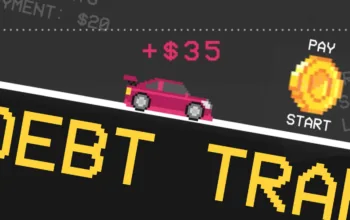The most popular YouTuber in the world is going Hollywood.
A helicopter drops Mr. Beast and his friends onto the roof of an abandoned hotel, resting on the water’s edge of a Mediterranean resort town. They’re about to spend the next seven days there, trying not to die, all in service of a recent YouTube video called “I Survived 7 Days in an Abandoned City.”
“This once beautiful city was bombed and abandoned because of war,” Mr. Beast’s voiceover explains. Which city? What war? It’s not yet clear, and at no point in the rest of the 17-minute video does MrBeast (as it’s styled on his channel) — age 25, real name Jimmy Donaldson — explain where he is. Outside of a half-second appearance of a postcard with the town’s name (Kupari), the location and its history as a casualty of the Croatian War of Independence in the early 1990s goes unacknowledged.
Why he’s there, however, is obvious to anyone familiar with his oeuvre. Mr. Beast is a YouTube creator whose approach to video production is far less interested in what is on screen than in what will make the numbers in the bottom left corner go up. What matters is more views, longer watch times, and more subscribers, and nothing in a Mr. Beast video is not in service of this goal: not the creepily airbrushed thumbnails, not the titles with an ever-increasing number of zeros (“Last to Leave Circle Wins $500,000,” “If You Can Carry $1,000,000 You Keep It!,” “$1 vs $100,000,000 House!”), not the watch time (usually around 20 minutes, or roughly the length of a meal), not the total lack of politics, current events, or extraneous details like, say, the complex aftermath of the breakup of Yugoslavia.
Since starting his YouTube channel in 2012 at age 13, Donaldson has been a devoted student of virality, shirking basically everything else in his life in service to the YouTube algorithm. It worked; at 244 million subscribers, his is currently the second most popular channel in the world, second only to T-Series, an Indian record label. (Cocomelon, the beloved of iPad babies, is third.) His enormous fanbase, largely made up of children and teenagers, doesn’t mind that he is, as the New York Times magazine put it, “not particularly funny or well spoken or physically striking,” nor that he’s a socially awkward introvert who is “not really good at keeping friends.”
They care about him because Donaldson has figured out what makes a perfect YouTube video, how to capture young people’s dwindling attention spans by giving them nonstop visual stimulation with just enough real human drama and glimpses of the American dream that they can feel good about watching it. Now, with a just-announced deal — rumored to be worth as much as $100 million — to host an Amazon reality competition show with the biggest single prize in TV history ($5 million), he’s coming for Hollywood, too.
The Mr. Beast origin story, as recounted in profiles in Time, Rolling Stone, Bloomberg, and the New York Times, goes like this: After a Crohn’s disease diagnosis halted his baseball career in his sophomore year of high school, he turned his focus to his YouTube page, where he already had a presence making gaming content. Over time, his channel filled up with the standard fare of a teenage boy experimenting to see what sticks: There are bait-y headlines about “HOW TO UNLOCK ANY IPHONE,” Bee Movie memes, silly stunts (he counts to 10,000 and later 100,000 in one sitting, then watches fellow YouTuber Jake Paul’s terrible music video, “It’s Everyday Bro” for 10 hours straight), and letters to his future self (naturally, they are all about how many subscribers he hopes to have).
After dropping out of community college midway through his first semester, his mother kicked him out of the house. Luckily, he’d also just scored his first brand deal and used the money in a video called “Giving A Random Homeless Man $10,000” in which he does just that. Its success was the beginning of a cycle in which the more money he’d give away, the more attention it got, the more money he’d make from sponsorships, and the more money he’d be able to give away next time.
It’s a cycle that’s continued to this day, where a typical Mr. Beast video might pit a hundred people against each other to win $500,000 (the last to leave a certain designated area wins the money; at one point the contestants were forced to stand still for 24 hours straight and the last 10 remained in the circle for a full 12 days), or, in his most popular video ever, creating a real-life version of the dystopian Korean Netflix series Squid Game. On his charity-focused channel, Beast Philanthropy, Donaldson films himself and his team rebuilding a school in Cameroon, paying for kids’ cleft palate surgeries, and giving away $30 million worth of food.
If your first thought is that this sounds a little icky, you’ve probably aged out of the Mr. Beast demographic, who have grown up less on traditional film and television created by adults but on videos created by influencers not much older than themselves. Last year, when Donaldson advertised his video “1,000 Blind People See for the First Time,” the lawyer and popular TikToker Alex Clavering tweeted, “There is something so demonic about this and I can’t even articulate what it is.” 81,000 people liked the tweet, drawing the stark differences between the kind of people who watch Mr. Beast videos and (presumably older) people who use Twitter. While many have criticized Donaldson for white saviorism, poverty profiteering, and exploitation, Clavering made clear that it wasn’t Donaldson’s individual acts of philanthropy that felt off, it’s the implication that “a single rich guy paid for life-changing surgery for us, and it’s easy to do this.”
In response to such criticisms, Donaldson has tweeted, “I already know I’m gonna get canceled because I uploaded a video helping people, and to be 100% clear, I don’t care.” As with any celebrity as famous as Mr. Beast, with every bit of criticism, the comments and replies are filled with his defenders.
In part, this is because Mr. Beast’s viewers, like any fans, feel as though they know him, even if it’s mediated through a screen. His videos almost always feature his clique: employees-slash-friends Karl Jacobs, Chandler Hallow, Tareq Salameh, Nolan Hansen, and Kris Tyson, the latter of whom came out as transgender last year. In the face of fans’ harassment, Donaldson defended Tyson in a tweet, writing “All this transphobia is starting to piss me off.”
Donaldson has admitted he isn’t good at keeping friends and that “all my friends revolve around work.” In recounting his first meeting with his now-girlfriend, South African esports caster Thea Booysen, Donaldson said on a podcast that he had to pepper her with specific questions before dating because “I don’t really get along with women if they don’t love learning, they’re not obsessive, they don’t have a hobby.” His perfect idea of a date, he said, is the two of them taking an IQ test and then studying to see if they can beat their scores.
Donaldson currently employs 500 people, 300 on his production team and 200 at his snack company, Feastables, which reportedly accounts for about 70 percent of his total revenue. They’re based in Greenville, North Carolina, where he’s transformed the town into a creator economy paradise, complete with a five-home cul-de-sac locals call “Beastville” where he and his crew live and work. He’s now a citywide hero, acting as something between Santa Claus and Willy Wonka: Kids reportedly crowd around wherever he goes, dreaming of being in one of his videos.
/cdn.vox-cdn.com/uploads/chorus_asset/file/25342761/GettyImages_1420812477.jpg)
Dave Kotinsky/Getty Images for MrBeast Burger
The more immediate issue with producing the world’s most-viewed YouTube videos is what it takes to make them: Not only are they expensive (the Squid Game video reportedly cost $3.5 million), but former employees have accused the Mr. Beast company of fostering dangerous and exploitative conditions. One editor said that Donaldson berated him almost every day, called him offensive names, and described a workplace of favoritism and toxic perfectionism. Another former employee said that he believed he was let go because he was the only one campaigning for better safety protocols; in response, a Mr. Beast spokesperson told Time that “the company has high standards for performance and not everyone is best suited for this work.” Because of Donaldson’s reputation for giving money away to subscribers, scammers have used his likeness to promote AI giveaways and referral schemes (Donaldson has also been accused of misleading his followers by promoting a cryptocurrency that tanked in 2021).
Despite pulling in around $600 million to $700 million per year, according to his own estimate, Donaldson’s production company does not make a profit and does not expect to be profitable this year. Instead, he reinvests the money into his charity channel and his other videos, or his numerous other business ventures. Primary among them is Feastables, the snack brand that once included a chocolate bar called “Deez Nuts” (they’re no longer allowed to use the name after a company called Dee’s Nuts won a lawsuit against it). He’s currently planning Mr. Beast-branded games and apps, and has a deal with the collectible toy company Moose Toys. Though he briefly ran a ghost kitchen burger chain, last year Donaldson sued the operating company, calling the burgers “disgusting” and “inedible”; they then countersued.
There’s a solid chance that, if you’re reading this, you find Mr. Beast’s whole thing rather distasteful and/or a grim signifier of the state of children’s entertainment: uninterested in quality and only making bigger, louder, more attention-grabbing and easier-to-consume content for kids to get addicted to and form misguided parasocial relationships with. These interpretations may be true, but what’s at least a little bit interesting about Mr. Beast is that the man behind it doesn’t appear to be enjoying himself.
Watch enough of his videos and you’ll have seen Donaldson spend 50 hours buried alive (and later a whole week), 50 hours in Antarctica, 24 hours trapped in ice, 30 days without food, seven days alone in a white padded room (a video that made me feel deranged by the end of it), and a full week on a small raft in the middle of the ocean. (Which ocean? C’mon, we’ve been through this.) He has paid assassins, bounty hunters, the FBI, and US military members to try and hunt him and lost money in the process.
After consuming enough Mr. Beast content, it’s hard not to wonder who’s actually having fun here and to think how much you’d rather watch a behind-the-scenes documentary about the grunt work that goes into each video. “The more I suffer, the more you guys watch,” he says on day four of being trapped at sea. Later, as a storm approaches and he and his crew attempt to build a waterproof structure that will last the night, he delivers an upbeat scripted ad for Shopify. (The structure does not hold and they all have to sleep under soaked-through towels; one of his crew members describes it as “the worst experience I’ve ever had in my entire life.”)
Some of his former employees have spoken out against these kinds of stunts and brainless stimulation for clicks; one director of a Mr. Beast video told Time, “These algorithms are poisonous to humanity. They prioritize addictive, isolated experiences over ethical social design, all just for ads. It’s not MrBeast I have a problem with. It’s platforms which encourage someone like me to study a retention graph so I can make the next video more addicting. At Beast I did that on steroids.” By exploiting YouTube’s algorithm, Mr. Beast has created a modern-day arena for influencer-gladiators to torture each other and where average Joes can compete for a piece of the spoils. It’s Jackass if the Jackass dudes read self-help books and idolized Elon Musk.
This is a strategy that legacy entertainment companies are looking to mimic. With his Amazon competition show, Donaldson is the latest in a long list of digital native influencers who’ve attempted to go Hollywood, usually with floundering success. That’s because famous influencers are in large part one-person shows who deeply understand their followers, and studio executives and traditional film and television producers have different goals and different audiences to attract. It hasn’t stopped them from trying to harness the popularity of influencers, of course, but the pivot doesn’t always land.
What’s easier to imagine than Mr. Beast becoming, say, a late-night talk show host or TV presenter is the entertainment industry continuing its current race to the bottom of what’s profitable in the attention economy. By leaning harder into algorithmically generated recommendations and lowest-common-denominator programming, they’re mirroring the Mr. Beast philosophy of creating content totally devoid of complexity and point of view in the hope that it’s addicting enough that people will pay $10 a month for it. Unfortunately for the Netflixes and NBCs of the world, however, they’re up against a guy who says he wants to give all his money away — just as long as you “like” and subscribe.



